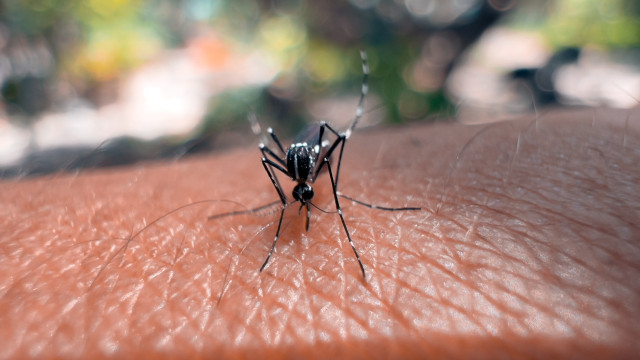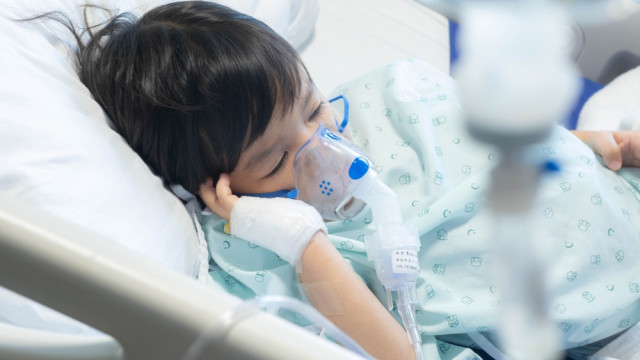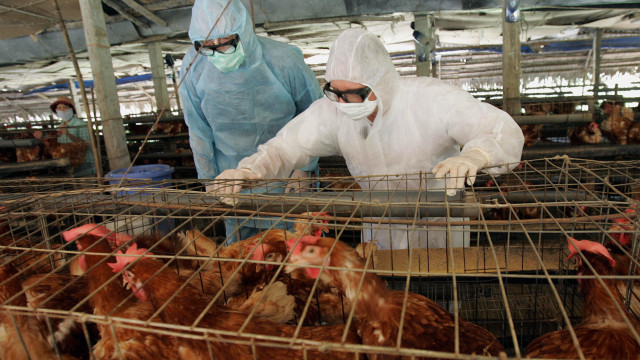



























See Also
See Again
© Shutterstock
0 / 28 Fotos
Introducing Rett syndrome
- Rett syndrome is a rare genetic disorder that impairs brain development. It is estimated to affect around one in 12,000 girls born every year, and it is only rarely seen in boys.
© Shutterstock
1 / 28 Fotos
Serious disability
- Although some children with Rett syndrome are affected more severely than others, it does tend to cause serious mental and physical disability in its sufferers.
© Shutterstock
2 / 28 Fotos
Four stages of development
- The development of Rett syndrome is generally described in four stages, although the symptoms at each stage overlap with one another to some extent.
© Shutterstock
3 / 28 Fotos
Stage 1
- Children usually present with stage 1 signs between six and 18 months. Until that point a child with Rett syndrome appears to develop and grow normally.
© Shutterstock
4 / 28 Fotos
Stagnation
- Stage 1 is sometimes called ‘stagnation’ and symptoms include low muscle tone, difficulty feeding, and unusual, repetitive hand movements (among others).
© Shutterstock
5 / 28 Fotos
Stage 2 - Stage 2 is normally referred to as ‘regression’ or the ‘rapid destructive stage.’ It is during this stage that the child begins to lose some of their abilities.
© Shutterstock
6 / 28 Fotos
Regression
- This stage usually occurs between the ages of one and four, and it can last for any length of time between two months and two years.
© Shutterstock
7 / 28 Fotos
Regression
- Signs during this stage include the loss of ability to use the hands purposefully, periods of stress and irritability, and unsteadiness and awkwardness when walking. Later on during this stage the child may experience periods of hyperventilation, or slow breathing (including breath holding).
© Shutterstock
8 / 28 Fotos
Stage 3
- Stage 3 is often referred to as the ‘plateau’ and can begin as early as two years old, or as late as 10 years old. During this stage some of the stage 2 symptoms may improve.
© Shutterstock
9 / 28 Fotos
Plateau
- For instance, there may be less irritability and crying, as well as an increase in alertness, attention span, and communication.
© Shutterstock
10 / 28 Fotos
Plateau
- However, children in stage 3 may also experience seizures, and their irregular breathing may get worse. It can also be difficult to gain and maintain weight.
© Shutterstock
11 / 28 Fotos
Stage 4
- Stage 4 involves a deterioration in movement and can last for years, or even decades. The main symptoms include scoliosis, muscle weakness and spasticity, and losing the ability to walk.
© Shutterstock
12 / 28 Fotos
Stage 4
- In general, communication, language skills, and brain function do not tend to get worse during stage 4. Repetitive hand movements may also improve.
© Shutterstock
13 / 28 Fotos
Stage 4
- Seizures may also become less of a problem during stage 4, although usually they are a lifelong problem that has to be managed.
© Shutterstock
14 / 28 Fotos
Causes - The vast majority of cases of Rett syndrome are caused by a mutation in the MECP2 gene. This gene contains instructions for producing a particular protein needed for brain development.
© Shutterstock
15 / 28 Fotos
Not genetic
- Usually there is no family history of Rett syndrome, meaning that it is not genetic and not passed from one generation to the next.
© Shutterstock
16 / 28 Fotos
Spontaneous
- Almost all (over 99%) cases of Rett syndrome are spontaneous, meaning that the mutation happens randomly.
© Shutterstock
17 / 28 Fotos
Diagnosis
- Rett syndrome is normally diagnosed based on a child’s symptoms, and after ruling out other more common disorders.
© Shutterstock
18 / 28 Fotos
Often diagnosed late
- Indeed, Rett syndrome is often not diagnosed for several years, because it is so rare and children only start to present with symptoms between six and 18 months.
© Shutterstock
19 / 28 Fotos
Blood test
- If Rett syndrome is suspected, a blood test can identify whether a mutation on the MECP2 gene is responsible for the syndrome.
© Shutterstock
20 / 28 Fotos
Other causes - However, failing to find a change on the MECP2 gene does not necessarily rule out Rett syndrome (since there may be another cause).
© Shutterstock
21 / 28 Fotos
Treatment
- Since there is no cure for Rett syndrome, the focus of treatment is on managing symptoms. There are a number of different treatments and aids from which a child may benefit.
© Shutterstock
22 / 28 Fotos
Aiding communication
- Speech and language therapy, picture boards, and eye-gaze technology may help with communication.
© Shutterstock
23 / 28 Fotos
Other therapies
- Physiotherapy can help with mobility, and occupational therapy can help develop the skills needed for dressing, feeding, and other daily activities.
© Shutterstock
24 / 28 Fotos
Medication
- Some children will need medication for breathing and mobility problems, as well as anti-epileptic medicines to control seizures.
© Shutterstock
25 / 28 Fotos
24-hour care
- Many people with Rett syndrome reach adulthood, and some even live into old age. In the majority of cases, however, 24-hour care is needed throughout their lives.
© Shutterstock
26 / 28 Fotos
Ongoing research
- Rett syndrome is a very challenging condition to live and deal with. While there is currently no cure, scientists are actively looking for ways to treat and prevent the syndrome. Sources: (NHS) See also: Reye's syndrome: The illness that affects children
© Shutterstock
27 / 28 Fotos
© Shutterstock
0 / 28 Fotos
Introducing Rett syndrome
- Rett syndrome is a rare genetic disorder that impairs brain development. It is estimated to affect around one in 12,000 girls born every year, and it is only rarely seen in boys.
© Shutterstock
1 / 28 Fotos
Serious disability
- Although some children with Rett syndrome are affected more severely than others, it does tend to cause serious mental and physical disability in its sufferers.
© Shutterstock
2 / 28 Fotos
Four stages of development
- The development of Rett syndrome is generally described in four stages, although the symptoms at each stage overlap with one another to some extent.
© Shutterstock
3 / 28 Fotos
Stage 1
- Children usually present with stage 1 signs between six and 18 months. Until that point a child with Rett syndrome appears to develop and grow normally.
© Shutterstock
4 / 28 Fotos
Stagnation
- Stage 1 is sometimes called ‘stagnation’ and symptoms include low muscle tone, difficulty feeding, and unusual, repetitive hand movements (among others).
© Shutterstock
5 / 28 Fotos
Stage 2 - Stage 2 is normally referred to as ‘regression’ or the ‘rapid destructive stage.’ It is during this stage that the child begins to lose some of their abilities.
© Shutterstock
6 / 28 Fotos
Regression
- This stage usually occurs between the ages of one and four, and it can last for any length of time between two months and two years.
© Shutterstock
7 / 28 Fotos
Regression
- Signs during this stage include the loss of ability to use the hands purposefully, periods of stress and irritability, and unsteadiness and awkwardness when walking. Later on during this stage the child may experience periods of hyperventilation, or slow breathing (including breath holding).
© Shutterstock
8 / 28 Fotos
Stage 3
- Stage 3 is often referred to as the ‘plateau’ and can begin as early as two years old, or as late as 10 years old. During this stage some of the stage 2 symptoms may improve.
© Shutterstock
9 / 28 Fotos
Plateau
- For instance, there may be less irritability and crying, as well as an increase in alertness, attention span, and communication.
© Shutterstock
10 / 28 Fotos
Plateau
- However, children in stage 3 may also experience seizures, and their irregular breathing may get worse. It can also be difficult to gain and maintain weight.
© Shutterstock
11 / 28 Fotos
Stage 4
- Stage 4 involves a deterioration in movement and can last for years, or even decades. The main symptoms include scoliosis, muscle weakness and spasticity, and losing the ability to walk.
© Shutterstock
12 / 28 Fotos
Stage 4
- In general, communication, language skills, and brain function do not tend to get worse during stage 4. Repetitive hand movements may also improve.
© Shutterstock
13 / 28 Fotos
Stage 4
- Seizures may also become less of a problem during stage 4, although usually they are a lifelong problem that has to be managed.
© Shutterstock
14 / 28 Fotos
Causes - The vast majority of cases of Rett syndrome are caused by a mutation in the MECP2 gene. This gene contains instructions for producing a particular protein needed for brain development.
© Shutterstock
15 / 28 Fotos
Not genetic
- Usually there is no family history of Rett syndrome, meaning that it is not genetic and not passed from one generation to the next.
© Shutterstock
16 / 28 Fotos
Spontaneous
- Almost all (over 99%) cases of Rett syndrome are spontaneous, meaning that the mutation happens randomly.
© Shutterstock
17 / 28 Fotos
Diagnosis
- Rett syndrome is normally diagnosed based on a child’s symptoms, and after ruling out other more common disorders.
© Shutterstock
18 / 28 Fotos
Often diagnosed late
- Indeed, Rett syndrome is often not diagnosed for several years, because it is so rare and children only start to present with symptoms between six and 18 months.
© Shutterstock
19 / 28 Fotos
Blood test
- If Rett syndrome is suspected, a blood test can identify whether a mutation on the MECP2 gene is responsible for the syndrome.
© Shutterstock
20 / 28 Fotos
Other causes - However, failing to find a change on the MECP2 gene does not necessarily rule out Rett syndrome (since there may be another cause).
© Shutterstock
21 / 28 Fotos
Treatment
- Since there is no cure for Rett syndrome, the focus of treatment is on managing symptoms. There are a number of different treatments and aids from which a child may benefit.
© Shutterstock
22 / 28 Fotos
Aiding communication
- Speech and language therapy, picture boards, and eye-gaze technology may help with communication.
© Shutterstock
23 / 28 Fotos
Other therapies
- Physiotherapy can help with mobility, and occupational therapy can help develop the skills needed for dressing, feeding, and other daily activities.
© Shutterstock
24 / 28 Fotos
Medication
- Some children will need medication for breathing and mobility problems, as well as anti-epileptic medicines to control seizures.
© Shutterstock
25 / 28 Fotos
24-hour care
- Many people with Rett syndrome reach adulthood, and some even live into old age. In the majority of cases, however, 24-hour care is needed throughout their lives.
© Shutterstock
26 / 28 Fotos
Ongoing research
- Rett syndrome is a very challenging condition to live and deal with. While there is currently no cure, scientists are actively looking for ways to treat and prevent the syndrome. Sources: (NHS) See also: Reye's syndrome: The illness that affects children
© Shutterstock
27 / 28 Fotos
Rett syndrome: the genetic disorder predominantly affecting girls
The genetic disorder causes problems in brain development
© Shutterstock
If you haven't heard of Rett syndrome, it's probably because it's very rare. Affecting an estimated one in 12,000 baby girls born each year (and only rarely seen in boys), this genetic disorder causes problems in brain development. And while it may be very rare, Rett syndrome causes severe mental and physical disability in its sufferers. Life for those living with Rett syndrome, and for those caring for someone with the condition, can be very difficult.
Intrigued? Then check out this gallery to learn all about Rett syndrome.
RECOMMENDED FOR YOU




































MOST READ
- Last Hour
- Last Day
- Last Week








